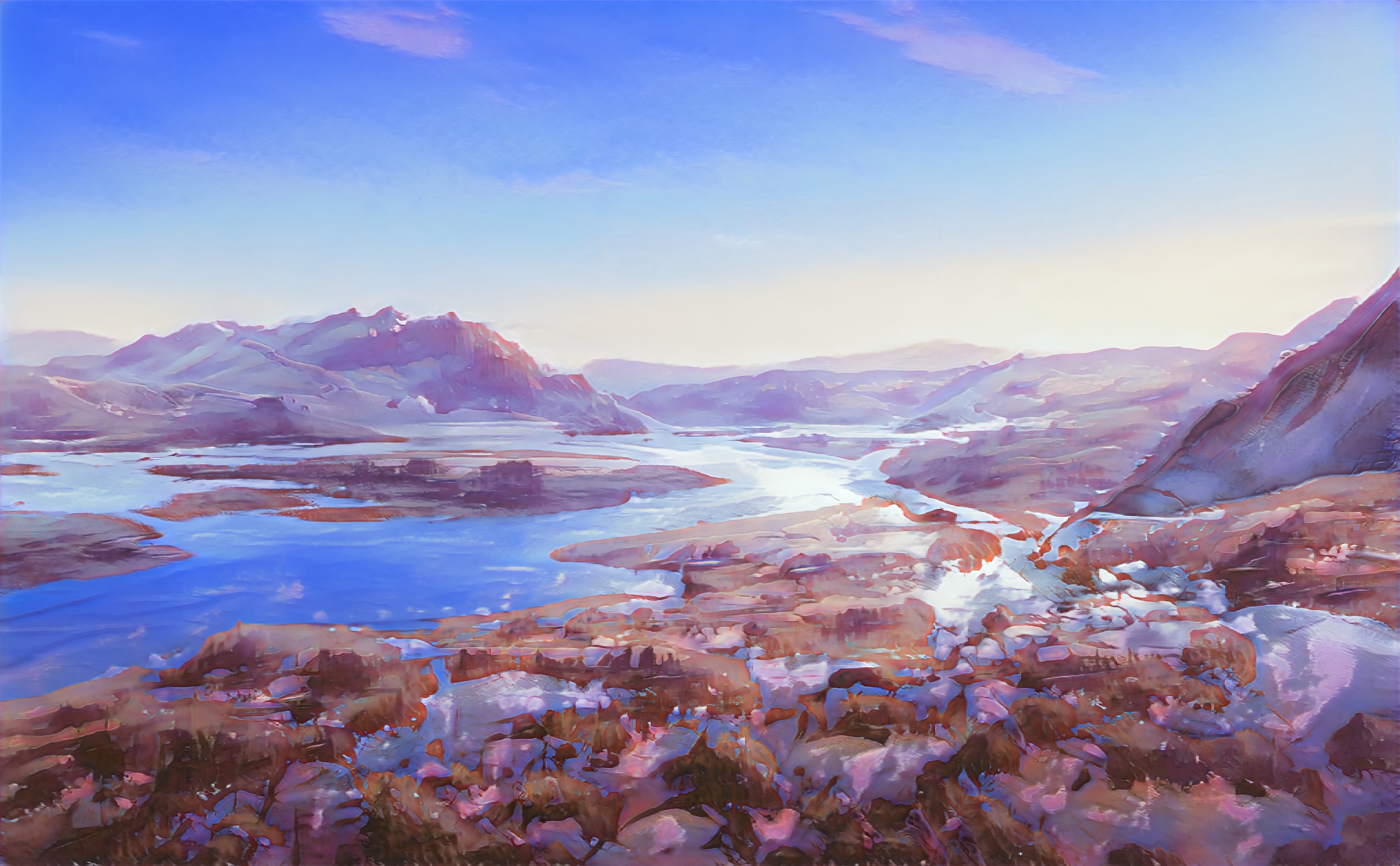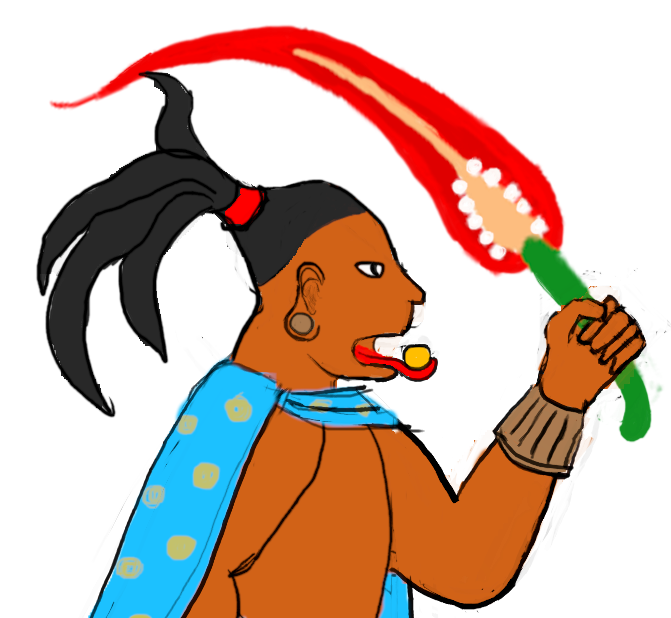Water everywhere and not a drop to drink.
In the leeward rain shadow of
High Lutinia, the
Salzlund plain is a bone dry desert of salt pockmarked by divots and basins that resemble heavily eroded impact craters.
This dry land is not entirely without water, however. A number of minor rivers and streams flow down from the mountains of High Lutinia and converge into a vast inland delta, a sprawling network of crater lakes connected by a convoluted tangle of myriad small waterways that resemble a web woven by a particularly demented spider. Frequent flooding during High Lutinia's wet season causes this web of waterways to shift and change. A crater lake that at one time existed at the center of the web with many inlets and outlets may suddenly find itself disconnected entirely after a flood, and any number of meandering waterways may suddenly find themselves flowing in the opposite direction.
Flowing through so much salt, the pristine mountain spring water rapidly becomes hypersaline, saturating with extreme quantities of chloride and bromide salts. The stream beds are littered with rounded pebbles of halite, and any surface submerged in these channels for long quickly become encrusted in salt crystals. The hypersaline water provides so much buoyancy, even
Aaltieran Chromebark will float in it.
Ecology
The only water in Prismaria that will dry you out while getting you wet.
Little can live in such a hostile environment, with all but the hardiest organisms quickly desiccating even while submerged in water. During each seasonal freshwater flood, however, the Waterweb comes alive. The influx of freshwater lowers the salinity to roughly that of regular sea water for a time, creating more tolerable conditions for many organisms that have remained dormant to emerge and thrive until the flood waters recede.
First to emerge are various species of algae that reproduce rapidly to cover the stream beds in blankets of brightly coloured algal growth. These alga species are collectively known as Rainbow Saltwort, and are related to the colourful Streamworts found in the freshwaters upstream. Swarms of minute herbivorous brine shrimps and other small crustaceans are swift to emerge during this period of algal colonisation, which in turn attract flocks of migratory marine birds. Forests of short-lived salt resitant bulrushes and reeds spring up in shallow submerged flats, providing nesting material for the migratory birds.
As the floodwaters recede again, the salinity of the system begins to climb again, dessicating and killing all the floral growth and forcing the invertebrate species into a dormant state. With their habitat and their source of food both literally drying up, the marine birds depart, migrating elsewhere.
A Tangled Waterway
The river runs thick with the salty tears of those who thought it was good to drink.
Throughout the year, most of the larger channels remain navigable to boats and barges with a shallow enough draft, and is the main transport route through the Salzlund between High Lutinia and the sea. Paddles and sweeps are required to move river craft upstream against the currents, though the water never moves with any great speed. The changing nature of the Waterweb means that any chart of navigable channels is rendered obsolete after every flood. The charting of new paths through the Waterweb is vital for travel, and the task is taken up by people known as
Web Crawlers.
Few settlements exist on the shores of the Waterweb. Those that do are coastal, relying on rain and evaporation stills for drinking water, and on the sea for food. These small communities are often known as Salt Towns, producing salt blocks for export by diverting the hypersaline water into broad, shallow evaporation pans. The salt produced here contains the highest concentration of bromide ions anywhere on Prismaria, making Salzlund salt the primary source of bromine.










This was an interesting read! I like that things that cause the water to be so undrinkable are still used as a resource. I wonder if you could use headers to break up the sameness of the text? Or migrate some points or asides to the sidebar. It always feels like wasted space when there's room for information.